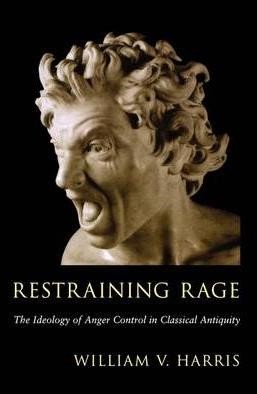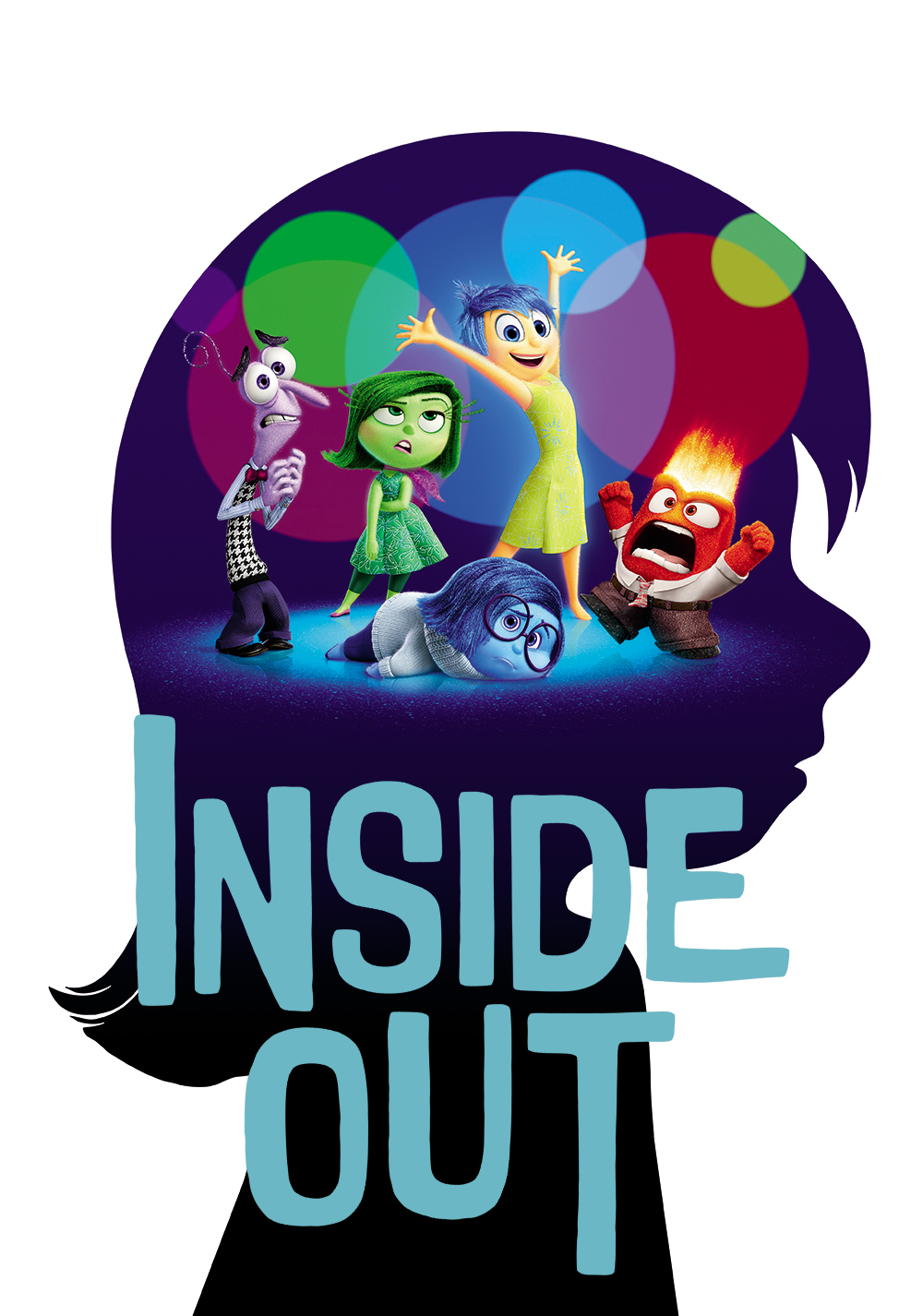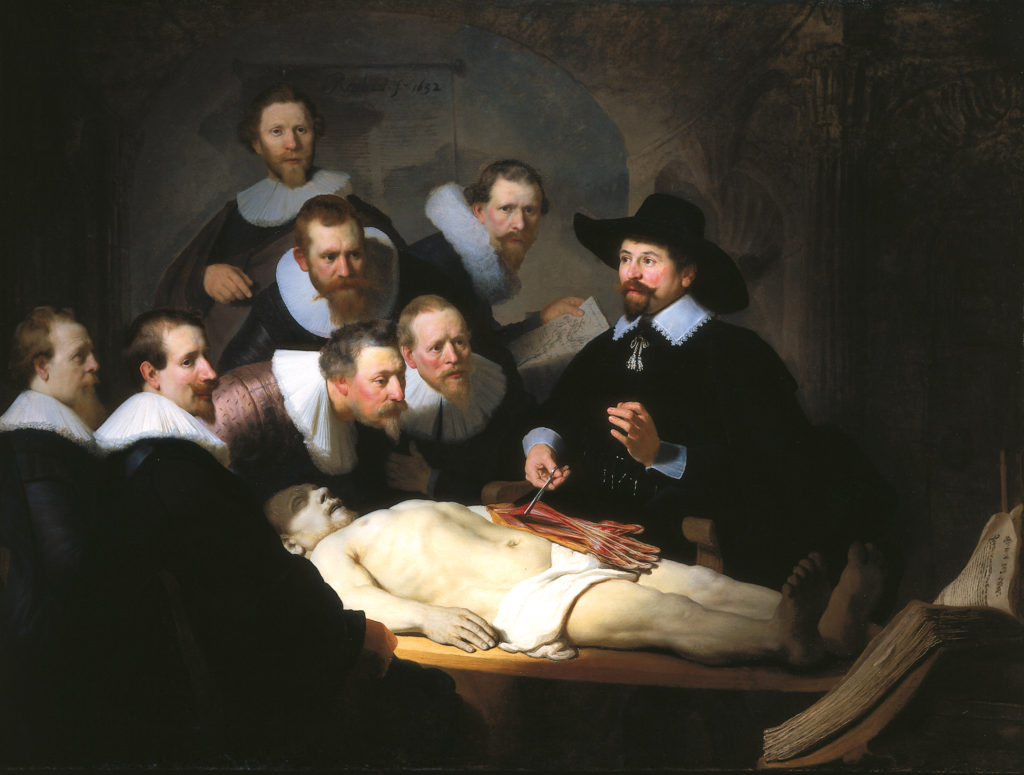Thomas Dixon is Director of the Centre for the History of the Emotions at Queen Mary University of London. His new research – part of the Living With Feeling project – explores the history, philosophy, and experience of anger.
In this, the third in a series of posts asking ‘What is anger?’, Thomas confronts the problems posed by the wide variety of terms that have been used to refer to anger-like emotions in other languages and other eras.
This post is extracted and adapted from a talk Thomas gave at the ARC Centre of Excellence for the History of Emotions Biennial Research Meeting in Adelaide in November 2016, and will be followed by two responses from researchers at the ARC Centre in the coming weeks. This post has been published simultaneously on the ARC Histories of Emotions blog.
In previous posts about anger, I have written about ideas drawn from philosophy and anthropology. In both cases I found myself fretting about the meanings of the word ‘anger’, and of some of the terms in other languages it has been used to translate. In this piece, I turn to linguistics and historical semantics to address this issue head-on.
The first phrase in the title of this post – ‘Angers Past’ – gestures towards the plurality of the emotional states, feelings and behaviours that are suggested by the singular English word, ‘anger’. In its second, differently punctuated form, the same phrase – Anger’s Past – was the title of an extremely valuable collection of historical studies edited by Barbara Rosenwein and published in 1998. The subtitle of that collection – ‘The Social Uses of an Emotion in the Middle Ages’ – reinforces the idea that ‘anger’ is the name of a singular emotion (albeit one with multiple uses). However, as the contents of the essays in that collection make clear, the English word ‘anger’ can be used to translate several different emotion words – including, to take just two examples, both ira and furor in Latin.
 Turning to the classicist William Harris’s book Restraining Rage: The Ideology of Anger Control in Classical Antiquity (Harvard University Press, 2001), a similar picture emerges. Harris’s work reveals a wide range of terms in both Greek and Latin for what he calls ‘anger-like emotions’ including, in Greek, mēnis, cholos, kotos, orgē and thumos and, in Latin, in addition to ira and furor, iracundia, indignatio, stomachari and dolor. In the past, as in the present, there have been many varieties of furious feelings and indignant passions – hence one might think about ‘Angers Past’ rather than ‘Anger’s Past’.
Turning to the classicist William Harris’s book Restraining Rage: The Ideology of Anger Control in Classical Antiquity (Harvard University Press, 2001), a similar picture emerges. Harris’s work reveals a wide range of terms in both Greek and Latin for what he calls ‘anger-like emotions’ including, in Greek, mēnis, cholos, kotos, orgē and thumos and, in Latin, in addition to ira and furor, iracundia, indignatio, stomachari and dolor. In the past, as in the present, there have been many varieties of furious feelings and indignant passions – hence one might think about ‘Angers Past’ rather than ‘Anger’s Past’.
Historical and contemporary linguistic comparisons can be used to reinforce this point over and over. Consider, for instance, the research of Daria Izdebska into the history of words for anger-like emotions in Old English and Middle English. Izdebska has traced the history and semantic connections of a range of different words, including yrre, gram, wod, wroth and torn. Following Cliff Goddard, Izdebska criticises the attempt to capture the mental lives of other cultures in modern English terms as a form of ‘terminological ethnocentrism’, which ‘introduces distortion and inaccuracy because it imposes the perspective of a cultural and linguistic outsider’.[1]
I share completely the opposition of anthropologists and linguists to projecting modern English-language psychological categories on to past periods and other cultures. Anna Wierzbicka has also written persuasively and prolifically about emotions from a linguistic point of view, making similar arguments about ethnocentrism. In a chapter on anger, disgust and Paul Ekman’s theory of basic emotions in her book Imprisoned in English: The Hazards of English as a Default Language (Oxford University Press, 2013), Wierzbicka mentions several languages which lack any direct equivalent to the English term ‘anger’, looking especially at Wut and Zorn in German (which, incidentally, are both related to early English terms studied by Izdebska). Wierzbicka suggests that Wut is more like ‘rage’ than ‘anger’ and includes an impulse towards destruction rather than aggression.
As I have said, one could multiply such examples endlessly, but the basic point is that historians can join forces with linguists in arguing against ethnocentrism when it comes to emotion words. As I continue to grapple with the question of what my proposed history of anger is going to be a history of, I take away from my studies of the historical linguistics of the topic two clear ideas and one enduring puzzle.

Ira’: detail from The Seven Deadly Sins, and Four Last Things by Hieronymus Bosch, c. 1500; Museo del Prado, Madrid.
My first clear idea is that language is constitutive of emotional experiences and so a change of emotion words across time and space is not merely lexical. There is a substantive difference – phenomenologically and emotionally, morally and metaphysically – between committing the deadly sin of ira and expressing the modern emotion of ‘anger’ as conceived by a psychologist like Paul Ekman. One impressionistic way to imagine this difference is to compare the world of thought and experience represented in Hieronymus Bosch’s depiction of ira as one of the seven deadly sins (c.1500) with the contrasting world of thought and experience represented in the figure of ‘anger’ as one of five emotions controlling a young girl’s brain in the Pixar movie Inside Out (2015). These are not the same things. Deadly sins are labelled, defined, evaluated, interpreted and, crucially, experienced differently from basic emotions.
The second and closely related clear idea I take away from thinking about historical linguistics is that we need to separate the question of whether there are human universals of some kind underlying emotional experiences from the question of whether the ‘basic emotion’ theories of late twentieth- and early twenty-first-century Anglophone psychology have accurately picked out those universals. The former may be true, the latter is not. Even if there is some universal, physiologically grounded, evolved, instinctive state that underlies anger-like emotion-like experiences in all cultures, it is unlikely that that reality is the contemporary English-language psychological construct ‘anger’.
Then the enduring puzzle – which I am still puzzling over – is as follows. If we agree that ‘anger’ is not the same thing as orge or ira or Wut or Zorn – or any of the other states, behaviours and feelings picked out by other non-English words for anger-like, emotion-like things – and if we agree that a history of anger-like phenomena needs to be constituted through the words, concepts, categories and ideas of the historical actors of past periods, because those words were constitutive of their experiences and attitudes, then on what basis do we identify the words of theirs that we are interested in?
To put it another way, in writing a history of anger of the kind I wish to attempt, is there any escape from ethnocentrism on the one hand or reductionist essentialism on the other? If ‘anger’ is itself both a time- and language-bound concept and, by extension, a time- and language-bound phenomenal experience, then what is the history of ‘anger’ a history of (since ‘anger’ is the name for an experience available in full only to modern English speakers)?
One possible solution is to stipulate a definition of ‘anger’ and look for anything in past cultures and other languages that seems to fit the bill. William Harris attempts something like this. So, on the one hand, he argues strongly for linguistic, conceptual and experiential plurality, and tries to keep this plurality in readers’ minds by referring, as I already noted, to ‘anger-like emotions’ and ‘angry passions’ rather than just to ‘anger’ in the singular. In addition, however, to justify his inclusion of a wide range of different states with various Greek and Latin names within his remit, he offers a definition of the core phenomenon he is interested in, as follows: ‘a vigorous, temporary, emotional condition in which the subject desires the object’s harm, and/or desires to attack the object with words, because of some perceived failing’.[2] Like all attempts to define emotional states, this one falls apart fairly quickly. Let me just mention two of several problems. First, people – as Harris himself repeatedly points out – in both the ancient world and the present – can be gripped by slow-burning anger-like states over long periods of time. Angry passions are not necessarily either vigorous or temporary. Secondly, Harris’s inclusion of a desire for revenge (whether physical or verbal) excludes many ideas and experiences of rage, fury and ire, ancient and modern, which do not include such a desire. I wrote a bit more about orgē-anger and revenge in a previous post with reference to Martha Nussbaum.
So, if we cannot assume that ira, or orge, or yrre, are the same thing as ‘anger’, and if we are unable to define ‘anger’ in a satisfactory way, then what is left as a methodological starting point? Where I have currently got to in my thinking about this question rests on two metaphors: thinking about the history of emotions as a kind of anatomy combined with genealogy.

The Anatomy Lesson of Dr. Nicolaes Tulp by Rembrandt (1632); the Mauritshuis Museum, The Hague.
Looking at this Rembrandt painting, I think of us as historians of emotions doing to the historical experiences we are interested in what the students are learning to do to the human body – gently teasing apart the flesh from the bones, the nerves from the sinews, the blood vessels from the internal organs – to see how the whole is made, how it might function, and what each part contributes to the whole. Incidentally, extending the metaphor a bit further, I think of language as the skeleton rather than the skin in this image. The kind of components we all look out for when anatomising emotional experiences include words, categories, narratives, metaphors, images, beliefs, moral and religious attitudes, bodily responses and behaviours, public performances and subjective experiences, feelings and testimonies. Each of these separate components itself has a history. And those components can come together in different formations at different times to constitute different emotional categories and feelings.
I combine this idea of the anatomy of emotions with the conventional idea that all such cultural elements can be explored genealogically as products of a process of cultural evolution – of descent with modification. Taking these two ideas of anatomy and genealogy together, my suggestion is that the history of anger should be anchored not by an underlying basic emotion or natural kind, nor by a projection back of modern English-language psychological categories on to past cultures, nor even by stipulating a general definition of the phenomenon to be studied – but by demonstrating a chain of cultural and intellectual evolution or descent of the component parts of modern angry experiences. The criterion for inclusion should be ancestral connection.
So, in fact the point I have reached is to think of my project as an investigation both of angers past and of anger’s past. Those many and various anger-like, emotion-like categories and experiences of the past sometimes include within them the cultural ancestors of the components of modern anger – such as a tendency towards violence, or a feeling of boiling over, or a flaring of the nostrils, or a sense of injustice. But those components have their own histories that can be traced independently of the various emotional constellations they have been part of – constellations named variously in different times and languages.
What I have in mind is a contingent story and not a teleological one. It treats modern Anglophone ‘anger’ as what happened to be produced by the past, not the goal or inevitable result of the past, and not something universal or timeless, but as one emotional stage in a process of evolution which will develop in different directions in the future. In the anatomical genealogy, since it is the specificities of contemporary experiences and theories of ‘anger’ that will anchor my history then it must also be held together by some particular lexicon of anger and emotion – namely the lexicon of modern English – not because I wish to make the ethnocentric assumption that that lexicon carves nature at the joints for all time – but because my experience – and that of other users of the English language – is fundamentally shaped by modern English terminology – notably, but not exclusively, as deployed by the varieties of academic psychology and psychiatry.
I imagine I will continue to worry at this distinction between angers past and anger’s past as my project develops, giving rise no doubt sometimes to perplexity and anxiety, not to mention irritation, resentment, indignation or rage at my own intellectual struggles. And that, of course, raises the next puzzle, namely how to decide not only which historical non-English terms, but also which contemporary English ones, should be included within the semantic net of a history of modern anger. But that is a puzzle for a future post.
Read more of Thomas’s thoughts on anger on this blog.
Follow Thomas on Twitter: @ProfThomasDixon
[1] Daria Izdebska, ‘The curious case of TORN: the importance of lexical-semantic approaches to the study of emotions in Old English’, in A. Jorgensen, F. McCormack, F. and J. Wilcox (eds) Anglo-Saxon Emotions. Series: Studies in Early Medieval Britain and Ireland (Ashgate: Burlington, 2015), pp. 53-74 (p. 58).
[2] William Harris, Restraining Rage: The Ideology of Anger Control in Classical Antiquity (Cambridge, MA: Harvard University Press, 2001), p. 40.
